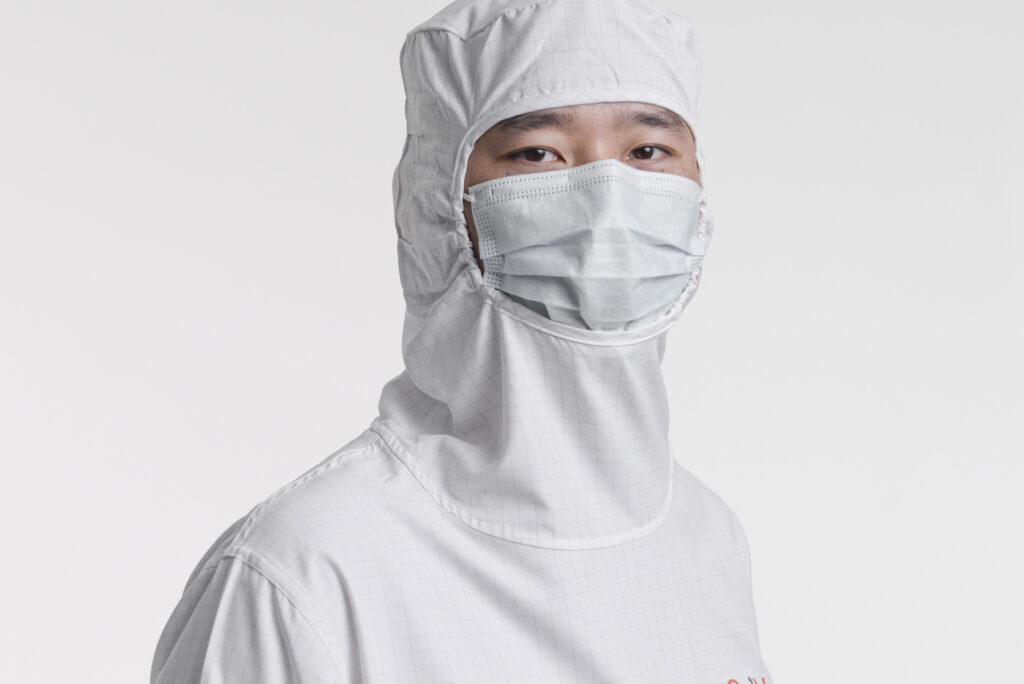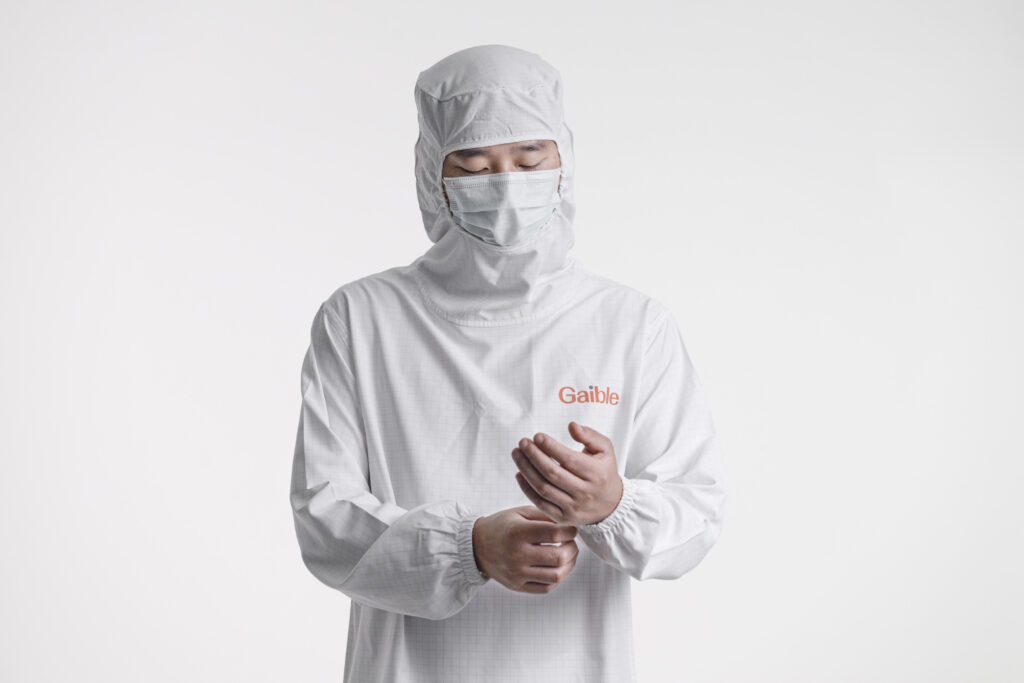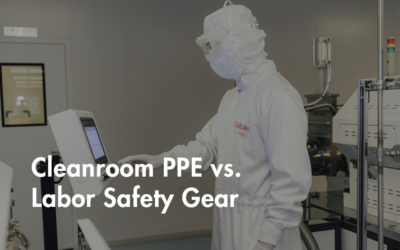Effective cleanroom garment care holds a crucial position across various industries, such as pharmaceuticals, food, electronics, and laboratories. Properly executed and rational clean garments management significantly impacts product quality and safety.
In this discussion, we will outline the primary steps in clean service management, focusing on warehousing, distribution usage, and disposal.

Join Our Official YouTube Channel
Warehousing Management:
1. Before storing, identify the type and specifications of clean garments and establish corresponding storage records. Different manufacturers producing garments with the same specifications may have varying sizes, necessitating trial fitting with samples before mass production.
2.Conduct a thorough inspection and acceptance of newly received clean garments, checking for quantity, size, color, and overall quality.
3. Affix labels to clean garments indicating storage time, batch number, and other relevant information, recording them in the inventory management system.
4.Transport the clean garments to the cleaning and disinfection area, perform necessary processes, and store them in designated rooms.
Distribution Management:
Determine the required quantity of clean garments for each task, recording them in the distribution list.
Select appropriate-sized and specified clean garments for distribution based on job requirements and usage needs. Clearly mark garments that require cleaning, sterilization, or have specific usage statuses to avoid confusion.
Mark cleaned and sterilized garments with the date of cleaning and sterilization, along with the effective use period. Pre-number clean garments and bags for staff identification.
Register distribution details, including time, quantity, and recipient information in the distribution list, obtaining the recipient’s confirmation through their signature.
Deduct the issued garments from inventory, updating records in the inventory management system.
Usage Management:
In this context, we primarily delve into the aspects of cleaning, dressing, transfer, disinfection, and sterilization, storage, recycling, and daily maintenance.
1.Cleaning:
Before initiating the cleaning process, meticulously inspect the cleanroom garments for damages, stains, and intact accessories. Any defective garments should undergo repair, replacement, or be discarded. Stained garments require stain removal before washing.
Ensure separate washing for garments designated for different uses and areas to prevent mutual influence and cross-contamination.
Utilize special detergent with non-ionic surfactants and a neutral pH value to guarantee garment performance and longevity.
Opt for sand core filtered water and pure water during the cleaning process. Dust-free purification workshops must employ ultrapure water, not ordinary industrial water. The final rinse should be executed with filtered pure water.
2.Dress Up:
Effective dressing is pivotal, demanding the establishment of reasonable and standardized Standard Operating Procedures (SOPs). Train employees and enforce strict adherence to procedures.
Conduct a thorough check for damages or stains before dressing.
Organize according to the company’s dressing process, ensuring the inner surface of clean garments is turned over for easy changing. Place garments into a numbered clean bag, with the numbered side facing up.
3.Transfer:
Post-dressing, transfer cleanroom garments to a disinfection or sterilization location, followed by their relocation to the designated usage area.
Precautions:
Exercise care during the transfer to prevent cleanroom garments from contact with non-clean areas.
Utilize closed containers or bags to shield cleanroom garments from external contamination.
Handle the transfer process with care to avoid damaging the clean garments.
Adhere to relevant regulations during the transfer to ensure compliance with health requirements.
4. Disinfection and Sterilization:
Cleanroom garments in distinct clean areas should undergo disinfection or sterilization as per regulations. The sterilization of clean garments is typically carried out using double-door pulsating vacuum sterilization cabinets, while ozone disinfection cabinets are commonly employed for disinfection. Place cleaned garments into a double-door sterilization cabinet or ozone disinfection cabinet for the requisite sterilization or disinfection process, ensuring timely documentation of relevant records.
Sterile or disinfected cleanroom garments must be utilized within the specified validity period.
Precautions:
Even if the clean garments have not reached the limited number of uses or the stipulated use time, immediate cessation of use is imperative if the garments are significantly contaminated or damaged.
When a third-party supplier is entrusted with the cleaning, disinfection, or sterilization of clean garments, the supplier must furnish evidence that the cleaning procedures adhere to cleaning validation standards.
5. Storage:
Cleanroom garments should be carefully packed in sterile bags and stored in designated, specialized storage cabinets.
Strict distinctions should be maintained in the storage areas for cleanroom garments used by workers with different operations and varying cleanliness levels.
The storage environment for clean garments must remain dry, with storage spaces being non-porous and easily cleanable.
Each piece of clean garment is assigned a fixed and verified life cycle, and garments that have expired must not be reused.
6. Recycling:
Upon exiting the clean room, place garments in a clean bag and deposit them into the designated container for convenient recycling by laundry staff.
Staff should routinely send recycled clean garments to specialized cleaning and disinfection centers for processing. If stains are identified in recycled clean garments, they must be removed before entering the washing process.
7. Daily Maintenance:
Regularly inspect the integrity and functionality of clean garments, promptly repairing or replacing damaged items.
Conduct routine functional verification of clean garments to ensure they meet usage requirements.
Implement regular cleaning and sterilization practices. Generally, Class A and B garments undergo cleaning and sterilization after each use. Class C garments are cleaned and sterilized 1 to 2 times a week. Class D and CNC areas only require cleaning, with the frequency determined by usage.

Destruction Management
When cleanroom garments exhibit signs of damage such as thread loss, breakage of conductive fibers, mildew formation, or reach the prescribed limit of usage or time, prompt scrapping becomes imperative. Enterprises should conduct inspections on samples of clean garments utilized for half a year or stored for one year. If a product loses its performance after testing, it should be scrapped promptly to ensure the continued qualified use of the product.
The significance of cleanroom garments care cannot be overstated. It not only holds paramount importance for personal and environmental safety but also plays a pivotal role in maintaining product quality and enhancing production efficiency. Effective management of cleanroom garments contributes to elevated environmental quality in clean rooms, safeguarding employee health, and ensuring product safety.






0 Comments